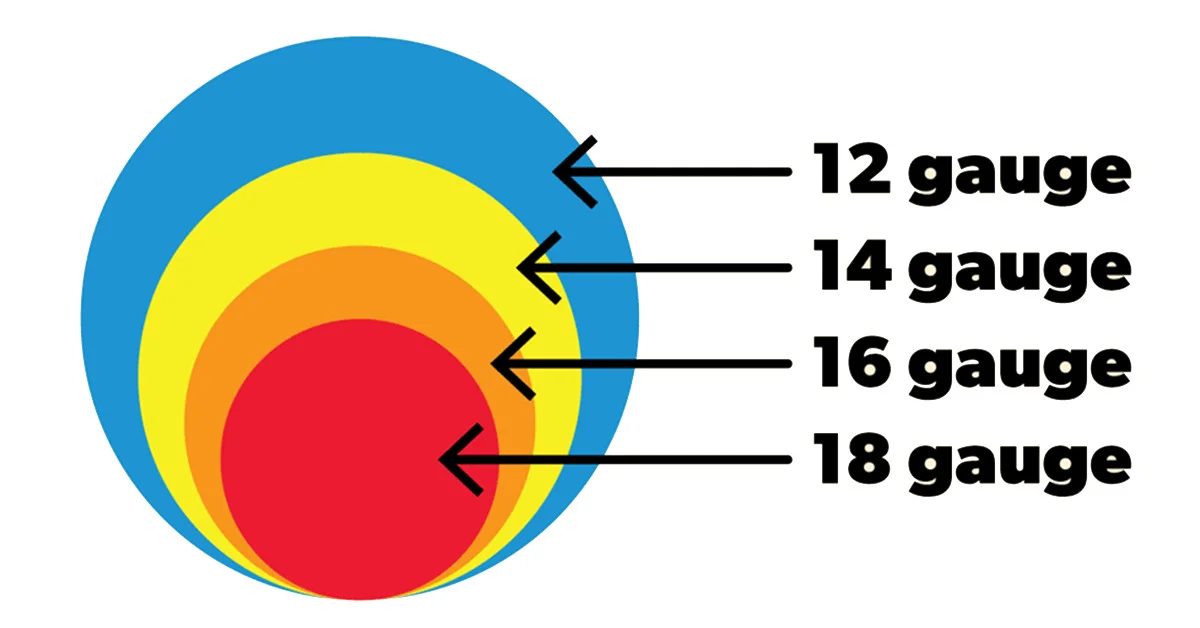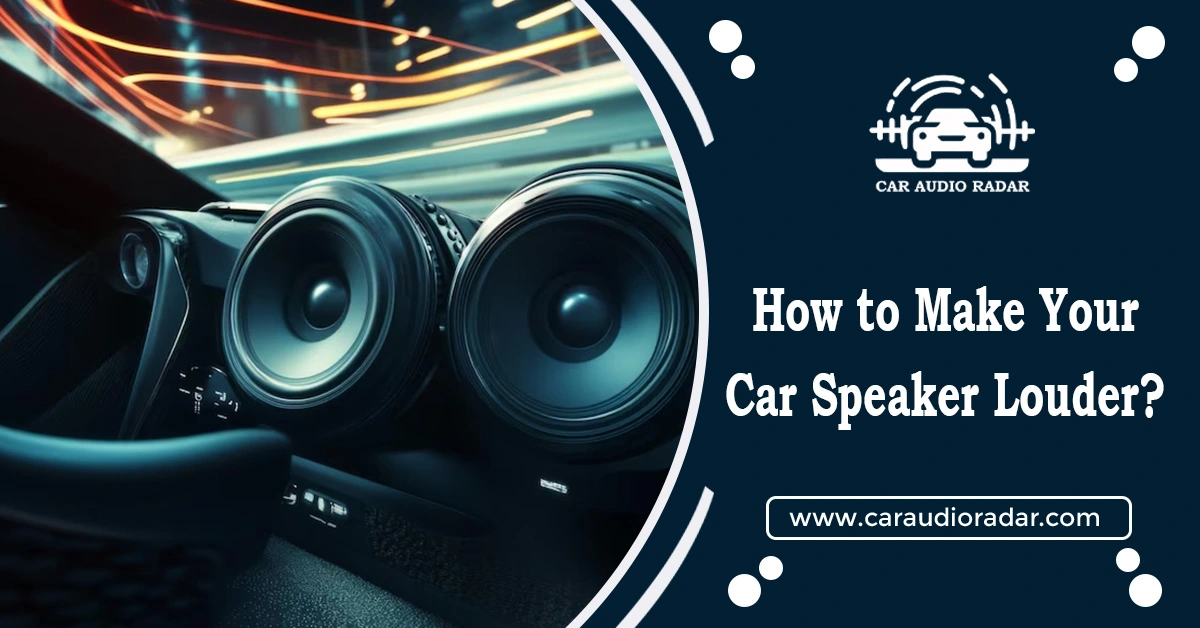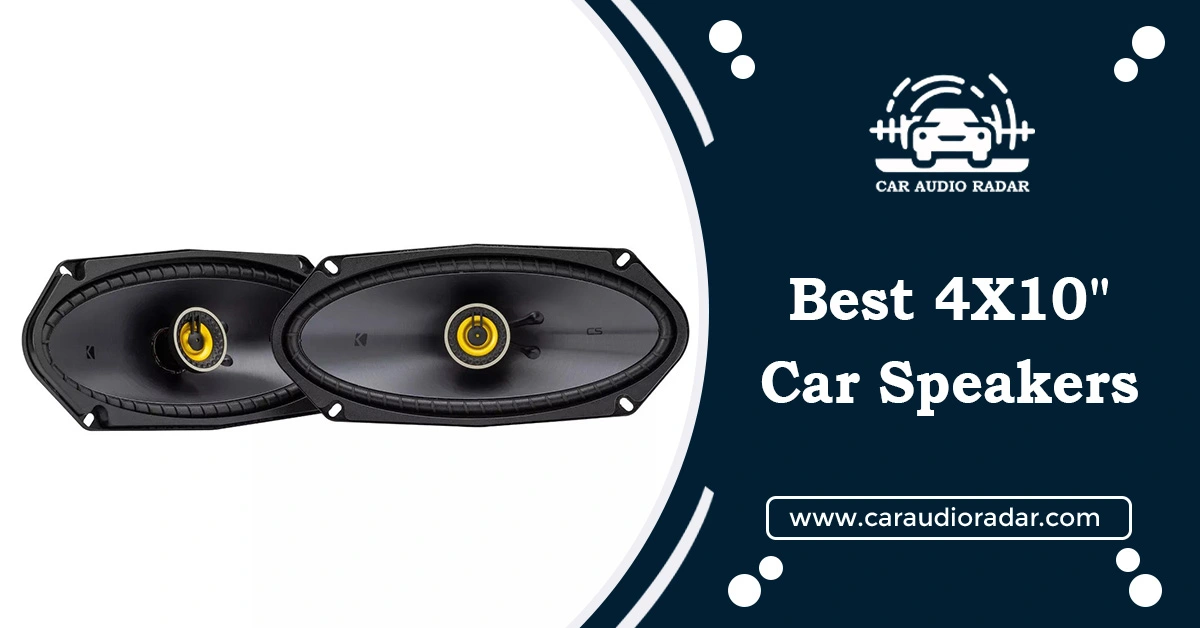
Jump to
What Size Speaker Wire Is Right?: Optimizing Your Audio

Choosing the right size speaker wire is important for making sure your music sounds great in your car. The thickness of the wire can change how well your music comes out of the speakers.
By figuring out what size wire is best for your car, you can make sure your music sounds awesome. In this article, we’ll discuss why picking the right wire size matters and give tips to help you choose the right one for your car.
Understanding Speaker Wire and Its Function
Speaker wire is the cable that connects speakers to their sound source, like an amplifier. If you want the best sound, it’s important to pick the right type of speaker wire for your car’s sound system. There are a few key things to consider: the wire’s thickness (gauge) and whether it’s made of copper-clad aluminum or pure copper.
The main thing to know about speaker cables is how they affect sound. The wire’s resistance should be low so that more power from the amplifier can reach the speaker, making the sound louder and clearer.
Capacitance and inductance are also in the mix, but resistance is a big deal. Don’t use solid copper wire meant for household use—leave that for your appliances and decorations. You can find car speaker wire made from copper-clad aluminum or pure copper called OFC (Oxygen-free copper) cabling.
How Does Speaker Wires Work?
You know that speaker wires carry sound from your gadgets to your speakers. But let’s talk about how they do their job.
When music or voices are sent through speaker wires, they carry a type of electricity called an analog audio signal. This electricity has the same shape as the sound waves it transmits. Once it reaches the speakers, it’s turned back into sound using magnets.
Since electricity travels through these wires, how well they conduct electricity is important. Two things matter: how long the wire is and how much it resists the electric signal passing through it. Let’s focus on resistance for now.
Thin wires create more resistance to electrical signals, which means the cables absorb more electrical energy. This can worsen sound quality, especially for higher pitches.
Wiring Size Standard: Choose Speaker Wire for Car Audio
People worldwide use the American Wire Gauge system to differentiate wires by size. In this system, a smaller number means a thicker wire. So, a wire labeled as 18 AWG is thinner than one labeled 14 AWG.
Originally, this system was made for solid wires. Nowadays, we often use wires made of many small strands, like stranded copper or aluminum. The gauge system is still used for these but doesn’t count the tiny spaces between the strands. So, a stranded wire might look thicker than a solid wire of the same gauge number.
When you see the stranded wire, it’ll have two numbers after the gauge size. These numbers tell you how many strands and how thick each strand is.
Some people argue whether having more strands makes the sound better. Generally, the number of strands is less crucial than having the right thickness. More strands usually mean the wire is more flexible, whereas a solid wire is stiff because it’s just one piece of copper.
Buying the Right Speaker Wire
The most important thing when shopping for speaker wire is its quality. Sometimes, you might see a wire marked as 16 gauge, but it’s thinner. It’s critical to get your speaker wire from a trusted brand.
Sizing Wire for Speakers
Factory car speakers that don’t use much power work well with almost any wire size because they don’t need much power. However, if you switch to more powerful aftermarket speakers and amplifiers, you’ll likely need to use thicker cables to handle the increased power.
Consider how much power your speakers will use. Small speakers, like those indoors or dashboards that need up to 50 watts, can work well with thin wires (16 or 18). But if you’re going to power your speakers with about 225 watts from an amplifier, you’ll need to use thicker wires to make sure they get enough power.
Subwoofer Wiring
Most speakers in doors and decks work well with nearly any wire, but subwoofers need more power. It’s best to use 12 AWG cables to connect subwoofers to an amplifier, although a 14-gauge wire is good enough for most situations.
Crossover Wiring
Using an active crossover lets you better adjust your car’s stereo system, but setting it up can be tricky. Active crossovers need 12-volt power, and a small 18 AWG wire works fine because they don’t need much power.
Wiring an Amplifier
Bad wiring can mess up your car’s sound system. Amplifiers, especially the big ones, need a lot of power. Using too thin cables for your amp could harm the amp, melt the wire, or even start a fire. It would help if you did some things to pick the right power cable for your amp.
How to Choose the Right Gauge: Size Speaker Wire
Copper speaker wire | |||||
Wire AWG | 20 Speaker | 40 Speaker | 60 Speaker | 80 Speaker | 160 Speaker |
24 | 2ft(0.6 m) | ft(1.2m) | 6 ft (1.8 m) | 8ft(2.3m) | 15 ft (4.7 m) |
22 | 4 ft (1.1 m) | ft (2.2 m) | 11 ft (3.3 m) | 14 ft (4.4 m) | 29 ft (8.8 m) |
20 | 6 (1.8m) | ft (3.6 m) | 18 ft (5.3 m) | 3 ft (7.1 m) | 47ft(14.2 m) |
18 | 9 ft (2.8 m) | 18 ft(5.6 m) | ft (8.4 m) | 37 (11.2m) | 73 ft (22.4 m) |
16 | 12 ft (3.6 m) | 23 ft (7.2 m) | 5 ft (10.7 m) | 47ft(14.3m) | 94 ft (28.7 m) |
14 | 20 ft (6.2 m) | ft (12.3 m | ft (18.5 m | 1 ft (24.7 m) | 162 ft (49.4 m) |
12 | 31 ft (9.4 m) | 62 ft (18.9 m) | 93 ft 28.3 m) | 124 ft (37.8m) | 248 ft (75.5 m) |
10 | 48 ft (14.6 m) | 96 ft 2 9 2 m) | 144 ft (43.8m) | 191 ft (58.3m) | 3ft (116.7 ) |
8 | 72 ft (22 m) | 144 ft (44 m) | ft (65.9 m) | 288 ft (87.9m) | 577 ft (175.8m) |
Copper Clad Aluminum (CCA) wire | |||||
Wire AWG | 20 Speaker | 40 Speaker | 60 Speaker | 80 Speaker | 160 Speaker |
24 | 1 (0.4 m) | 3 ft (0.9 m) | ft (1.3 m) | 6 (1.7 m) | 1 ft (3.4 m) |
22 | 3 ft (0.8 m) | ft(1.6m) | 8ft(2.4 m) | 11 ft (3.2 m) | 21 ft (6.4 m) |
20 | ft (1.3 m) | ft (2.6 m) | 13 ft (3.9 m) | 17 ft (5.2 m) | 4 ft (10.4 m) |
18 | 7 ft (2 m) | 13ft(4.1 m) | 20 ft (6.1 m) | 27ft(8.2 m) | 54 ft (16.3 m) |
16 | 9 ft (2.6 m) | 7 ft (5.2 m) | 26ft(7.8 m) | 4 ft (10.5 m) | 69 ft (20.9 m) |
14 | 15 f(4.5m) | 30ft(9m) | ft(13.5m) | 59 ft (18 m) | 118 ft (36 m) |
12 | 23 ft (6.9 m) | ft (13.8 m) | 8ft(20.7m) | 0 ft (27.6 m) | 181 ft (55.1 m) |
10 | 35 ft (10.6m) | 70ft(21.3 m) | 105 ft (31.9 m) | 140 ft (42.6m) | 279 ft (85.2 m) |
8 | 53 ft (16 m) | 105 ft(32.1m) | 158 ft (48.1 m) | 211 ft (64.2m) | 421 ft (128.4m) |
Does The Speaker Wire Size Matter in Car Audio?
- If you’re an audiophile looking for perfection, you’ll want to match your speakers and wires precisely.
- If you’re running long cables, especially through walls, thicker wires like 12 or 14-gauge are better.
- If you have low-impedance speakers, go for broader wires.
But for most people with standard speakers and setups, using 16-gauge wires is fine. You won’t notice much difference using slightly thinner 18-gauge cables, either.
Remember: Don’t fall for fancy sales pitches from companies selling super-expensive cables. High-quality wires at reasonable prices work just as well.
How Much Wire Do You Need?
Measure your distances carefully and add a little extra to be safe. It’s better to have too much wire than not enough.
Example
- Front speakers need 8 ft each (2 speakers)
- Rear speakers need 16 ft and 20 ft
- Total: 8 + 8 + 16 + 20 = 52 ft (about 15.9m)
Speaker wire is usually sold in rolls of 25ft, 50ft, and 100ft, but it can sometimes be found sold by the foot. Occasionally, you’ll come across precut lengths like 6, 12, or 18 ft. But generally, it’s more cost-effective to buy it by the roll.
Remember this rule: never risk running out of speaker wire – buy a bit more than you think you’ll need.
Choosing the Right Speaker Wire for Long Distances
What if you need a lot of wire, like 50ft or even 100ft? In that case, a good rule is to use a wire two sizes thicker than you’d normally use for shorter distances.
When we talk about wire length, we’re referring to the gauge number. As you go up or down, this number changes by two, and you won’t find odd numbers commonly used.
For example, if you normally use 18AWG wire, which is fairly thin, and you’re going to use it for a 50-ft run, you might lose about 4 watts of power at max. You could choose a wire two sizes up to avoid this loss, like 16AWG or even 14AWG.
Speaker Impedance and Power
When connected to an amplifier, lower-impedance speakers draw more electrical current than higher-impedance speakers. Therefore, you might need heavy-gauge wire, or longer cable runs for lower-impedance speakers.
Stranded vs. Solid Wire
Most speaker wires are stranded, comprising many smaller copper wires twisted together. Stranded wire is more flexible and less prone to breaking. Solid wire, on the other hand, is less flexible and can develop stress cracks over time.
Why Stranded Speaker Wire Is Better Than Solid
Stranded wire is great because it’s flexible and less likely to break when bent or stretched. It’s also easier to strip off the insulation to expose the bare wire, especially with a wire stripper. Plus, it’s simpler to use with connectors like spades or crimps.
On the other hand, solid wire, which is more common in home and industrial electrical wiring, can cause issues. Although you could use leftover solid wire for speakers, smaller gauges might develop cracks over time due to vibrations, especially in vehicles. Solid wire is also harder to handle when navigating curves, like around car seats or tight spaces.
Copper-Clad Aluminum vs. Copper Wire
Copper-clad aluminum wire has an aluminum core with a thin layer of copper plating. It’s cheaper than pure copper wire but has higher resistance, meaning you might need durable wire for the same performance as copper wire.
Saving Money with Smaller Wire
Since copper wire is pricey these days, and most people don’t blast their speakers at full power, here are some money-saving tips:
- If you usually don’t crank your amp or stereo past 50%-60% power, you can use a thinner wire without worrying about losing performance.
- Is extra wire lying around? You can use multiple thinner wires to create the same thickness as a tight wire. For example, you could use two pieces of 18AWG wire together to match the thickness of a single 16AWG wire.
For surround sound and center channel home theater speakers, you don’t need to splurge on the thick wire because they don’t need as much power.
Common Problems With Speaker Cable & Quick Fixes
Make sure your wires are cut to the right size.
- Watch out for lower impedance issues. This usually happens when speakers are wired incorrectly, which can damage your speakers or amplifiers.
- Avoid using leftover house electrical wire for your car stereo system. Solid wire is made of copper, but it’s not suitable for car audio applications.
- Check for pinched wires, as they can disrupt the power connection and cause your speakers or equipment to stop working. Make sure all connections are secure and free from any pinching.
- If you’re using moderate power subwoofers, they can handle much power but don’t overload the terminals.
- It can be a hassle if the wire comes loose from the terminal inside the subwoofer box, so ensure everything is connected correctly and securely.
Benefits of Buying & Using High-Quality Speaker Wire
- Remember to consider the type of wire, the thickness, and the length of the speaker wire you’re using. The quality of your speaker wire can affect how your audio sounds. Avoid using solid wire from the home theater.
- Some brands use deceptive tactics by making their cables look thicker on the outside while putting less wire inside.
- Lower-quality speaker wire can also cause signal interruptions, leading to distorted or fuzzy sound.
- While speaker wires may be more expensive than standard electrical wires, investing in high-quality lead is worth it for better sound quality.
- Quality speaker wire can also extend your speakers’ life if properly maintained, making it a smart choice for car audio enthusiasts.
Tips for Installation of Car Speaker Wire
- Always use heat shrink on your connections after crimping them securely. Avoid using electrical tape, as it’s less reliable.
- Stick to using the same size wire throughout your setup. Mixing different gauges can cause malfunctions and power loss.
- Double-check the speaker impedance to ensure compatibility with your system.
- Take your time during installation to make sure everything looks neat and professional.
- Label your cables with relevant information for future reference during upgrades.
- Look for stranded power cables with more strands for better power-carrying capacity. Avoid misleading products that mix copper-clad aluminum with standard copper wire.
- Use the correct connectors for your speakers and subwoofers, whether connectors or soldering.
- Choose the right speaker cable gauge for your setup, opting for thicker wire if it fits securely.
- If you have extra cable length, either tuck it away neatly, cut it shorter, or save it for future use.
Conclusion
In conclusion, choosing the right wire size for optimal sound is crucial for optimizing your car’s audio experience. By understanding the factors influencing wire gauge selection and following the tips in this guide, you can ensure that your sound system delivers optimal performance.
Upgrade your car audio setup confidently by selecting the perfect Size Speaker Wire to match your needs and preferences.
Frequently Asked Questions(FAQs)
The wire gauge is crucial when choosing speaker wire for your car audio setup. Refer to a wire gauge chart to match the speaker wire gauge with the power demands of your audio system. The thicker the wire (lower gauge number), the better it transmits power and ensures good sound.
Choosing the right speaker wire thickness for your car audio setup depends on the power your system puts out, the impedance (resistance) of your speakers, and the distance the wire has to go.
If you have a powerful system or the wire needs to go a long way, stout wires like 10AWG or 12AWG are usually best. But for regular setups, 16 gauge or 18 gauge cables should work fine.
The gauge of the speaker lead indicates its size and capability to carry electrical currents. In a car audio system, you should choose a thicker copper wire (lower gauge number) to accommodate the power requirements of your car speaker and amplifier.
Factors such as the length of the cable runs, the power requirements of your car audio system, and the overall impedance of your setup should inform your choice of wire gauge. Additionally, the type of speaker lead and whether it is stranded or solid wire.
Yes, the size of the speaker wire can impact the quality of your sound because of line loss. This happens when the wire’s resistance weakens the signal. Heavy cable with less resistance can reduce line loss, making your sound clearer and stronger when it reaches your speakers.
Using the wrong size speaker wire can cause problems like losing too much signal, insufficient power reaching your speakers, and the wire getting too hot. This can worsen your sound, lower the volume, and, in severe cases, even cause the wire to fail or start a fire.
If you have a powerful 1000-watt amp and regular 4-ohm car speakers, it’s best to use a 4AWG or 6AWG wire, especially if the wire needs to go a long distance. Check a wire gauge chart or talk to a professional installer to make sure you’re using the correct wire for your setup.
The proper larger wire for your car or home speakers depends on their power, resistance, and distance from the amplifier. Robust wires with lower gauge numbers usually send power well and reduce signal loss. People often use wires between 12AWG and 16 AWG for most car audio system setups.
Cooper Katzeel
Car Enthusiast
Cooper Katzel, a dedicated car enthusiast, delves into the world of automobiles and audio systems. With a deep interest in cars and a focus on superior sound, Cooper’s expertise traverses the spectrum. His journey is a delightful exploration of automotive wonders and the world of car speakers. Cooper’s passion and technical know-how make him a trusted advisor for car enthusiasts.
Follow On Instagram
Recent Posts
- All Post
- Blog
- Car Speaker
- Car Subwoofer
- Pro Tips & Guides
- Back
- Speaker Wire



Dream Life in Paris
Questions explained agreeable preferred strangers too him her son. Set put shyness offices his females him distant.


